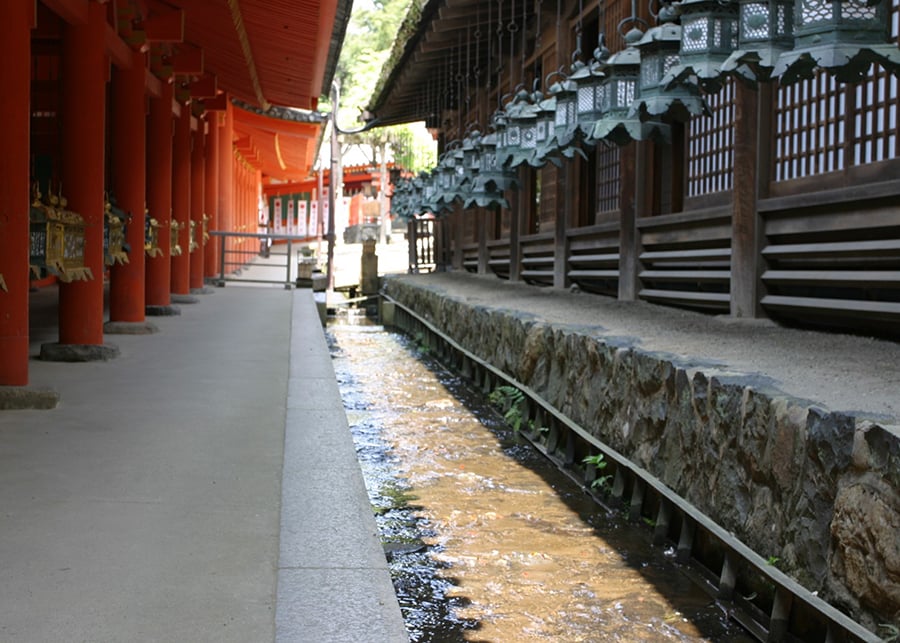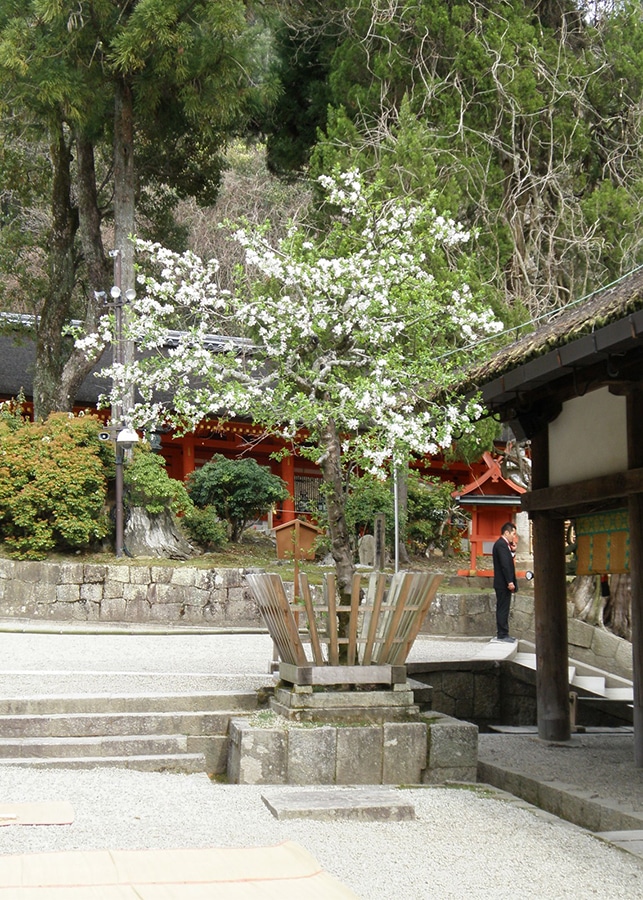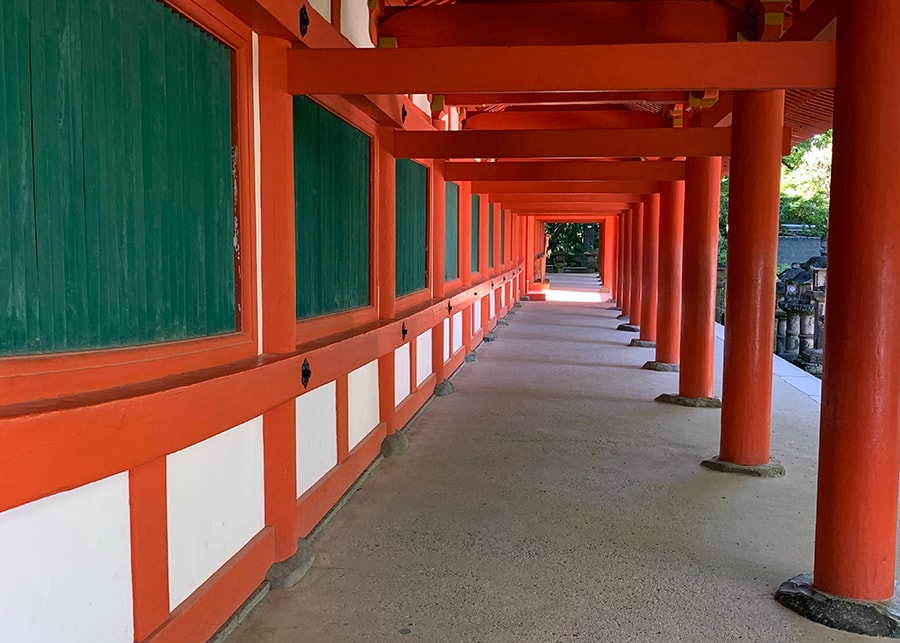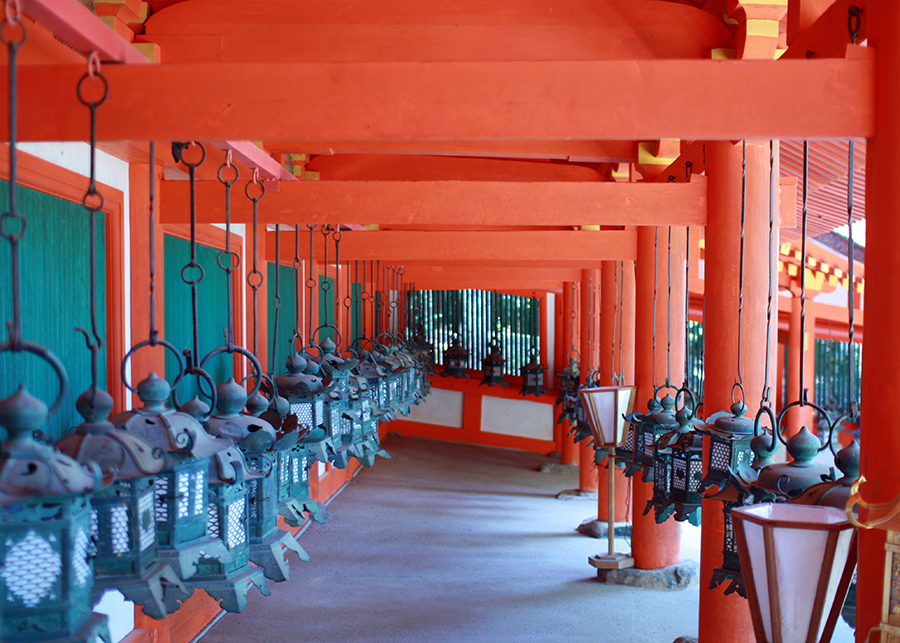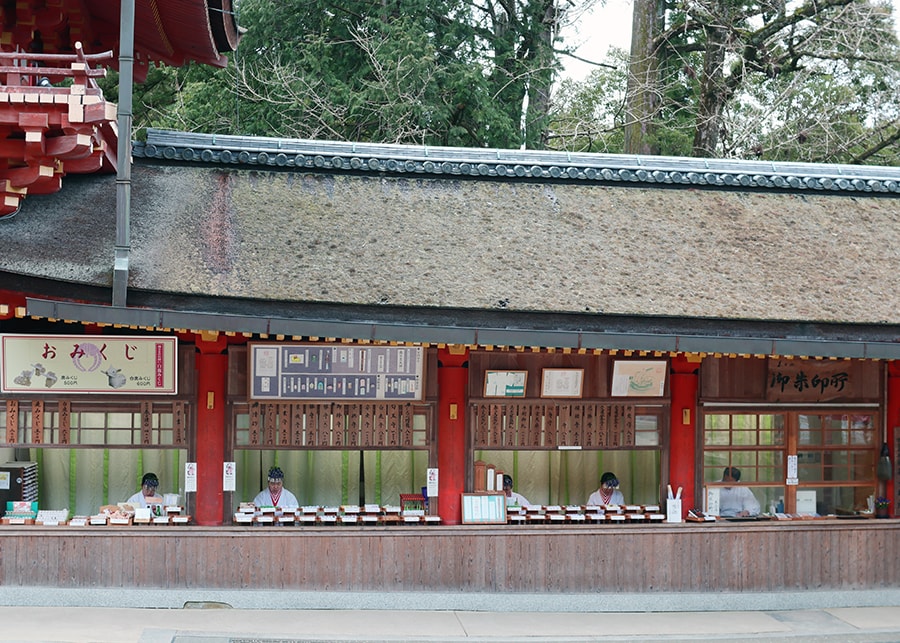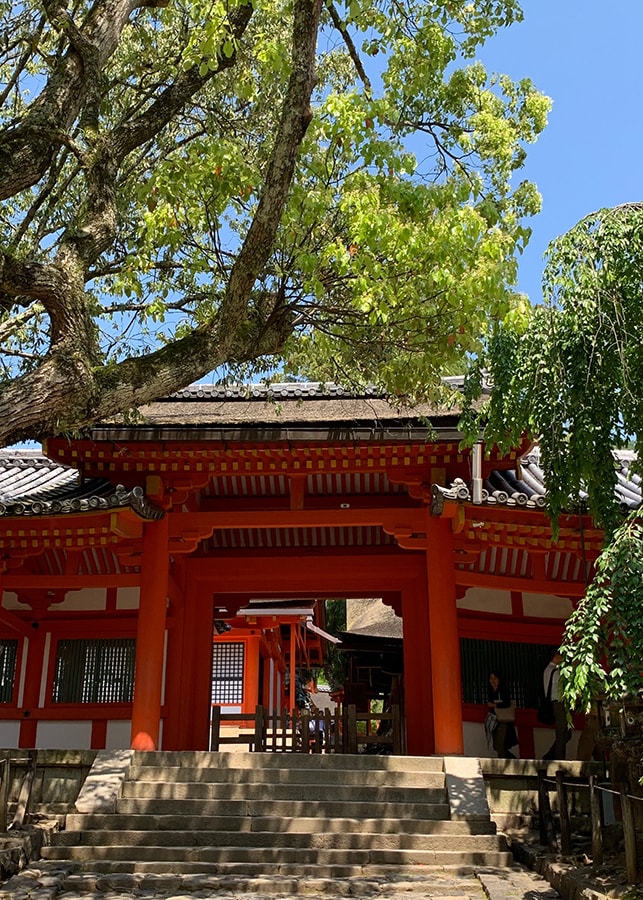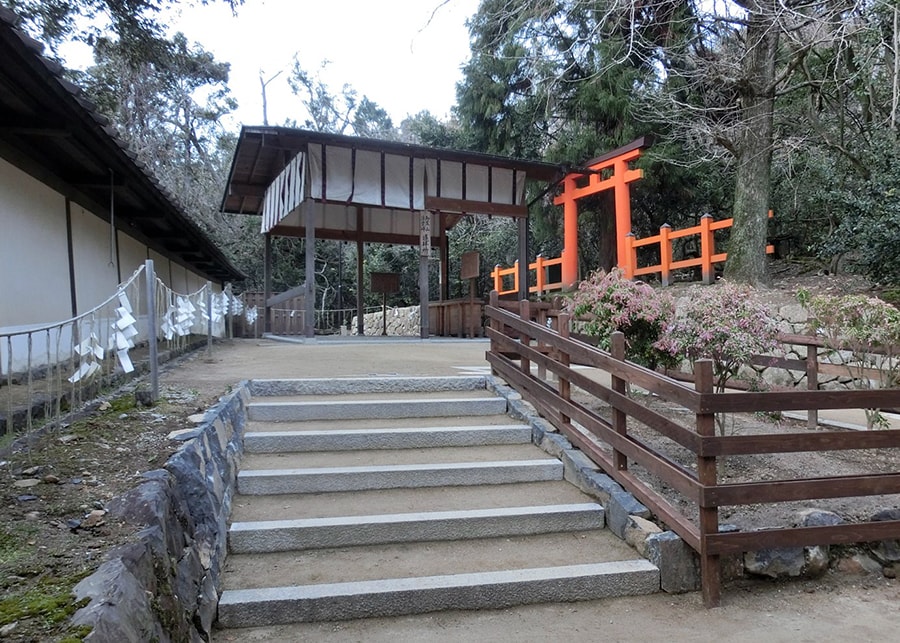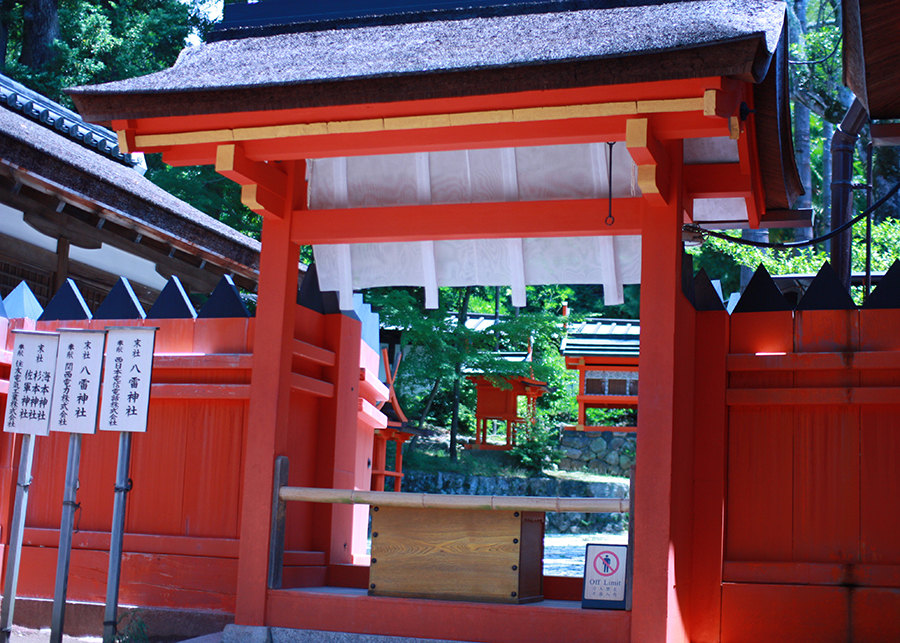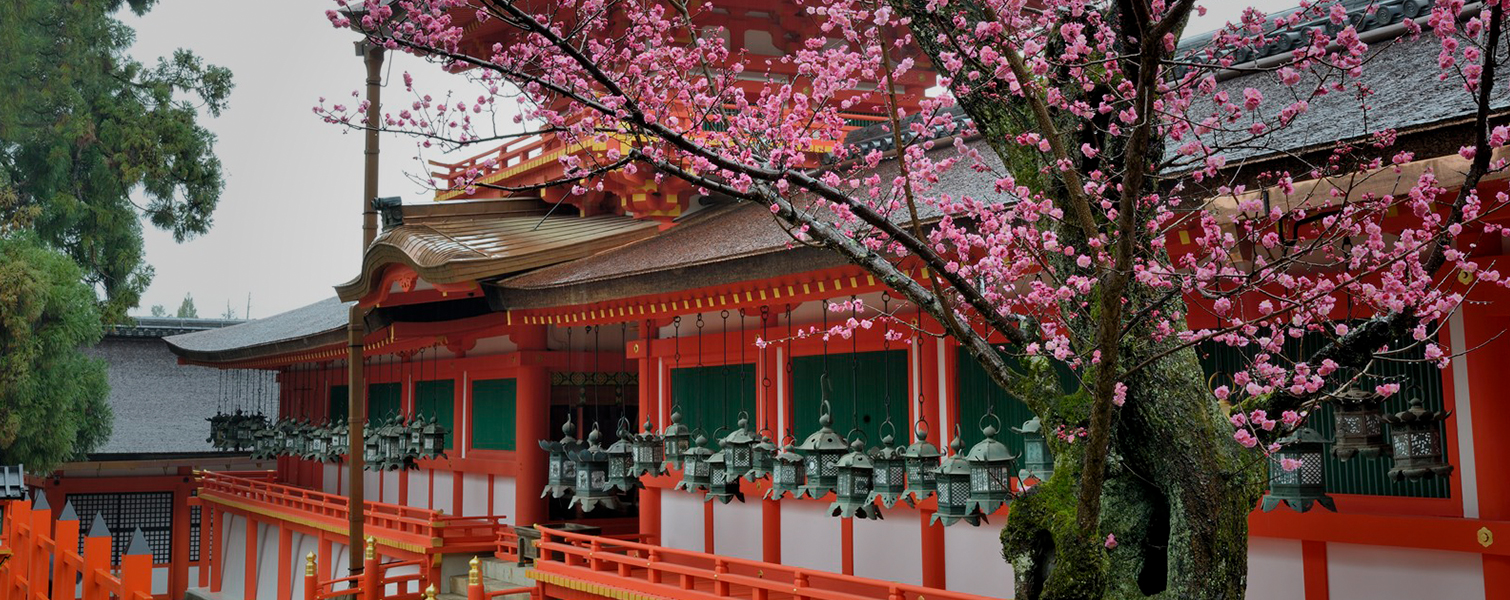
Main Sanctuary (in the Cloisters)

Main Sanctuary
(in the Cloisters)
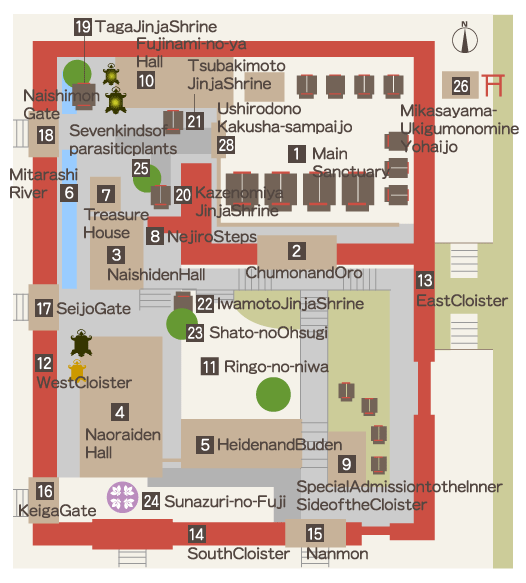
※Please click on the place where color changes to overlap the cursor.
Cloisters
(Important Cultural Property)
Cloisters surround nearly all four sides of the central part of Kasuga Taisha Shrine. The south cloister stretches 42m east to west, starting from the center of the Nanmon (South Gate). The ends face northward, each connecting to the east and west cloisters. The east cloister is about 37m long, with Yogo Gate in the middle, and ends where it meets the east side of the “Oro” (Open Veranda). The west cloister is about 57m long, and has three gates called Keiga, Seijo, and Naishi Gates, located from south to north respectively. The 27m long north cloister connects only to the west cloister, and ends before it reaches the back of the Main Sanctuary, which is why the length of the east and west cloisters are different.

[1]Main Sanotuary
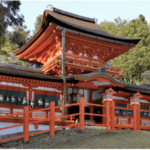
[2]Chumon and Oro
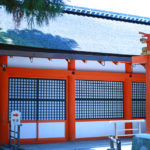
[3]Naishiden Hall
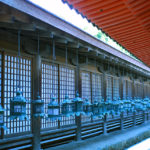
[4]Naoraiden Hall
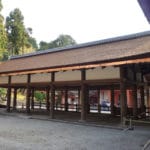
[5]Heiden and Buden
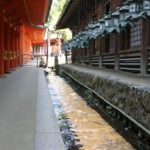
[6]Mitarashi River
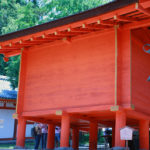
[7]Treasure House
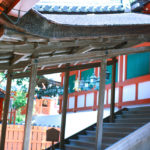
[8]Nejiro Steps

[9]Special Admission to the lnner Side of the Cloister
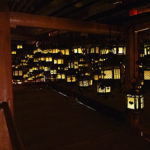
[10]Fujinami-no-ya Hall
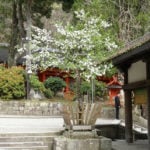
[11]Ringo-no-niwa
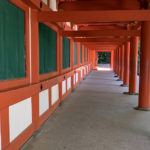
[12]West Cloister
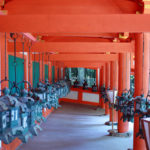
[13]East Cloister
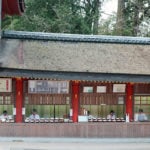
[14]South Cloister
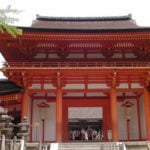
[15]Nanmon
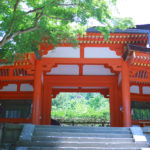
[16]Keiga Gate
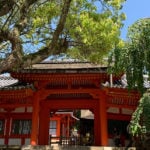
[17]Seijo Gate
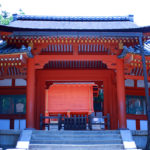
[18]Naishimon Gate
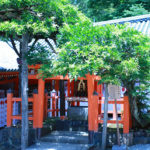
[19]Taga Jinja Shrine
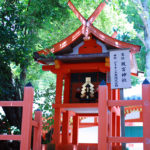
[20]Kazenomiya Jinja Shrine
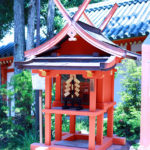
[21]Tsubakimoto Jinja Shrine
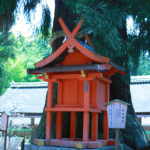
[22]Iwamoto Jinja Shrine
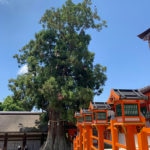
[23]Shato-no Ohsugi
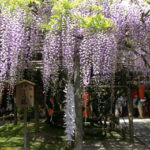
[24]Sunazuri-no-Fuji
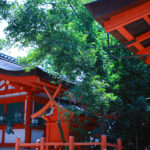
[25]Seven kind of parasitic plants
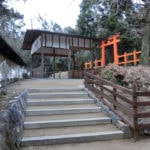
[26]Mikasayama-Ukigumonomine Yohaijo
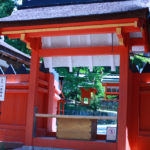
[28]Ushirodono Kakusha-sampaijo
Main Sanctuary *National Treasure

撮影:桑原英文
Deities
First Hall
Takemikazuchi-no-mikoto
Second Hall
Futsunushi-no-mikoto
Third Hall
Amenokoyane-no-mikoto
Fourth Hall
Himegami
Date of establishment: November 9th, 768
Kasuga Taisha’s oldest existing document from the early 13th century, “Koshaki”, said that a shrine hall for four deities was created on November 9th in the year of 768 during the reign of Empress Shotoku, when Fujiwara Nagate was “Sadaijin” (Senior Minister)
Origin
In the beginning of the Nara Period (710 – 794), a deity called Takemikazuchi-no-mikoto was moved from Kashima Jingu Shrine (Ibaraki Prefecture) to the top of Mt. Mikasa in Kasuga, Nara, in order to protect the capital Heijo-kyo. A few decades later, in 768, the first shrine structure was built at the present site of Kasuga Taisha by Fujiwara-no-Nagate, one of the national leaders, and other people, according to an order of Empress Shotoku, who was also a relative of the Fujiwara Clan. Adding to the first deity, more deities were enshrined here, including Futsunushi-no-mikoto from Katori Jingu Shrine (Chiba Pref.), Amenokoyane-no-mikoto, supposedly an ancestor of the Fujiwara Clan, and Himegami, both from Hiraoka Jinja Shrine (Osaka Pref.).
Chumon (Middle Gate) and Oro (Open Veranda) *Important Cultural Property

Chumon is an approximately 10m tall, two-storied gate standing in front of the Main Sanctuary. The “karahafu” (undulating gable) on its front was added later on during the Meiji Period.
“Oro” extends for about 13m with the Middle Gate at its center, in a form that resembles a bird spreading its wings. Today, priests take seats here during ceremonies held at the Main Sanctuary, but in former days, priests of Kofukuji Temple recited Buddhist sutras at this place.
Naishiden Hall *Important Cultural Property
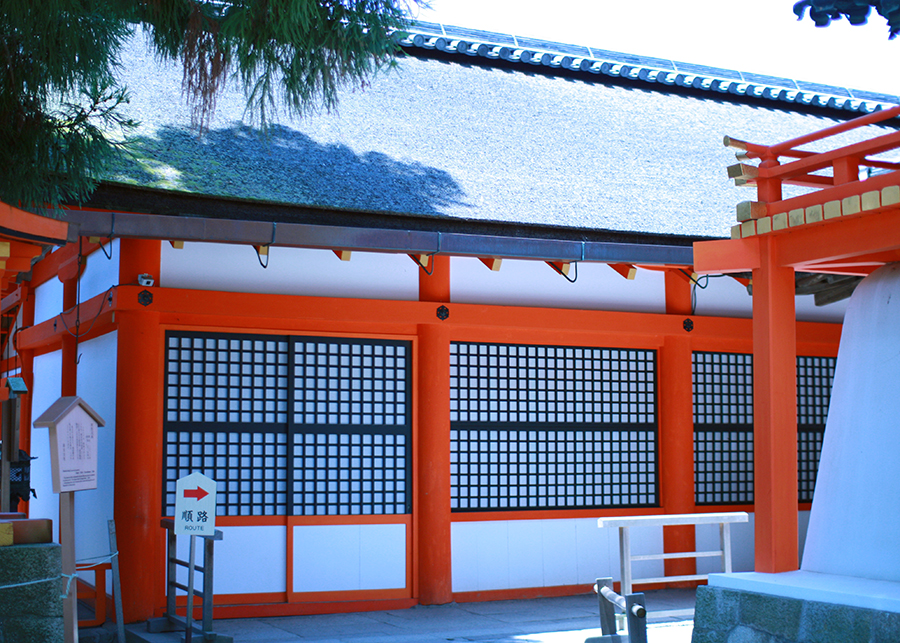
Naishiden was once a building for the “naishi” court ladies who served in the shrine. It is also called “Utsushidono”, because deities of the main shrine and Wakamiya Shrine are moved (“utsushi”) to this place at the time of “Zotai” (rebuilding) that takes place every 20 years. The building faces east, and the west part called Hisashi Room is used as the temporary dwelling place for the deity of Wakamiya Shrine.
Naoraiden Hall *Important Cultural Property
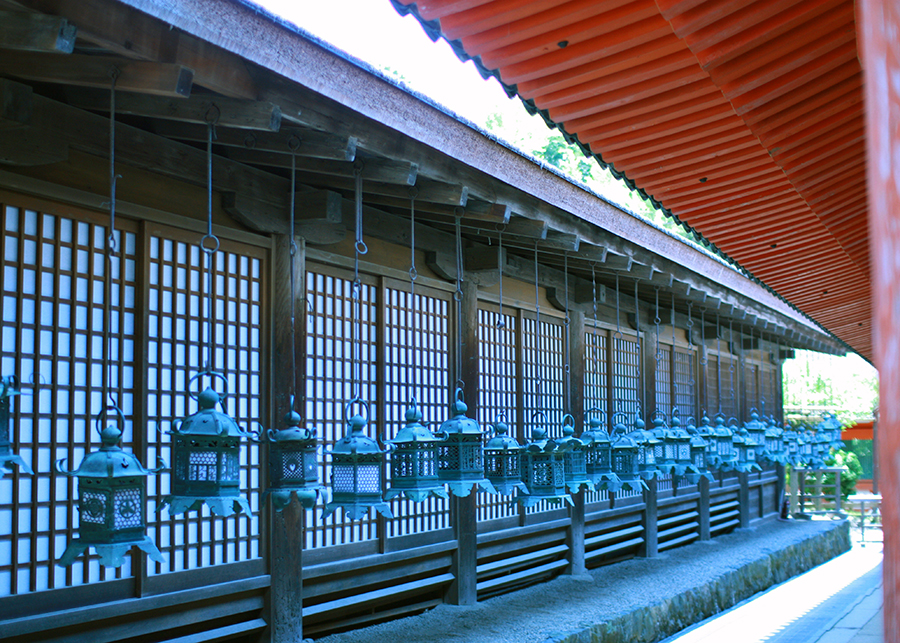
This large structure faces east, has 8 bays from north to south, and 4 bays from east to west, and was built using plain wood. The eastern 2 bays are the main part of the hall, where the “Naorai” ceremony for imperial representatives is held during the Kasuga Festival. The building is also called “Hakko-ya”, because during the Heian Period and afterwards (early 12th century), the “Hokke Hakko” (a ceremonial series of eight lectures on the eight scrolls of the Lotus Sutra) used to be held here, which drew large audiences.
Heiden and Buden *Important Cultural Property
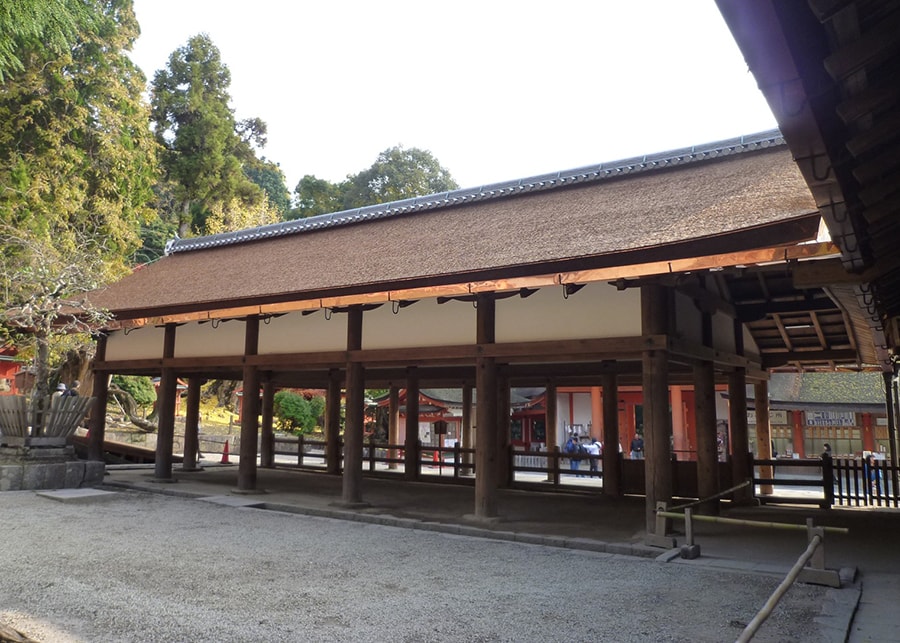
Since the hall stands just in front of the Nanmon (South Gate), it is easily mistaken as “Haiden” or worship hall. The 2 bays to the east are called “Heiden”, and the western 3 bays are called “Buden”. Heiden is a place where offerings from the emperor are placed temporarily, and is distinguished from Buden by its coffered ceiling. Buden is where traditional music and dance of the Imperial Court are offered, and is also used as a place for ceremonial music and dance on rainy days.
Treasure House *Important Cultural Property
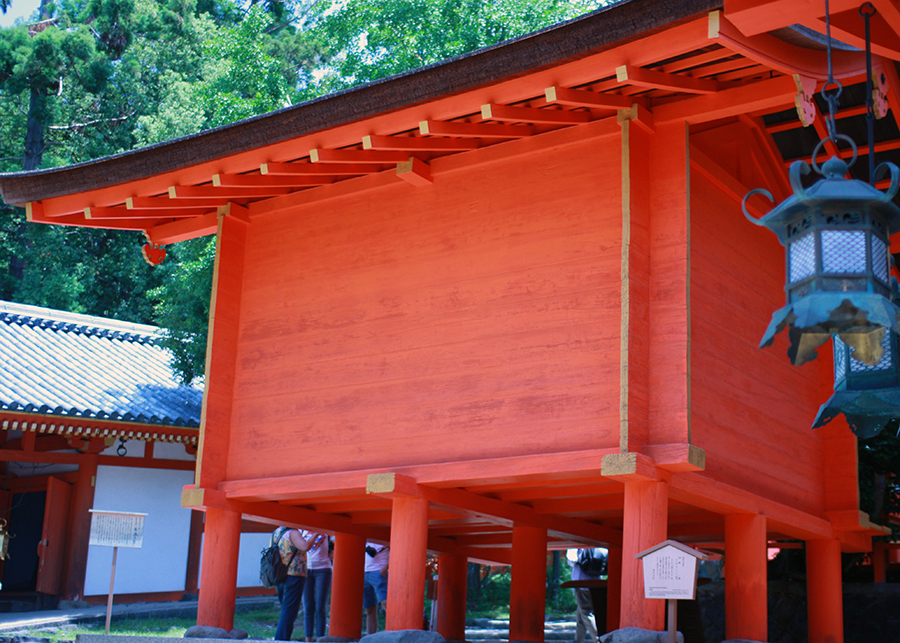
The log building, built in the “azekura” style, is painted in vermilion and stands facing east. It stores treasured items (mirrors, swords, spearheads, bows and arrows, etc.) that are used to adorn the Main Sanctuary for the Kasuga Festival in March, and its door is usually closed with a seal.
Nejiro Steps *Important Cultural Property
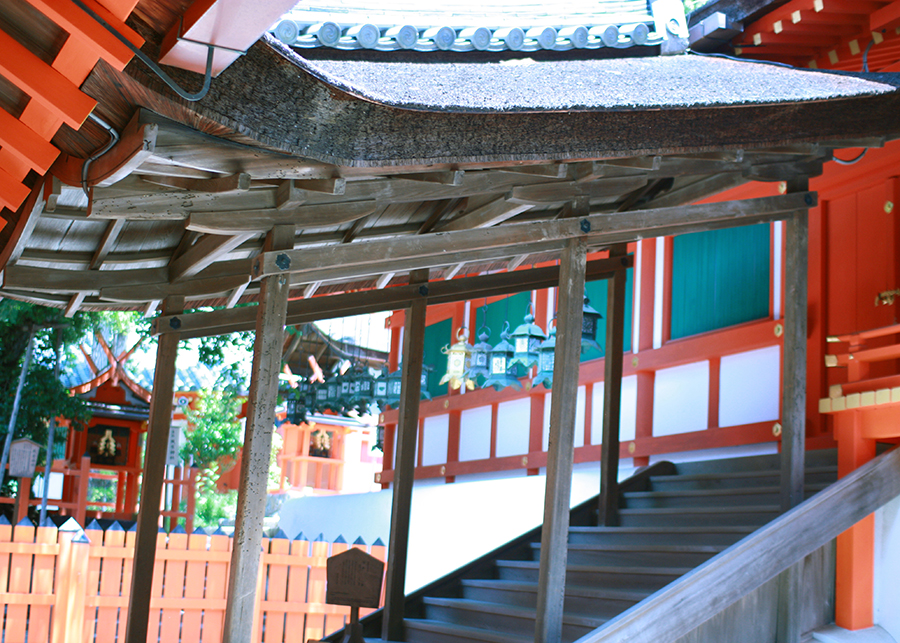
“Nejiro”, or the steps connecting Naishiden Hall and Oro (Open Veranda) used to be called “Noboriro”. The steps are built obliquely, and most of the components are parallelogram. They were supposedly created by Hidari Jingoro, who was the most famous carpenter of the 17th century.
Special Admission to the Inner Side of the Cloister
●Reception opens: 9:00 ~ 16:00
●Admission fee: ¥700
Visitors are allowed to walk through the cloister, which is lined with hanging lanterns, to the front of Chumon (Middle Gate). They may also enter Fujinami-no-ya Hall.
Please note that admission may not be allowed when special ceremonies or events are held.
Fujinami-no-ya Hall
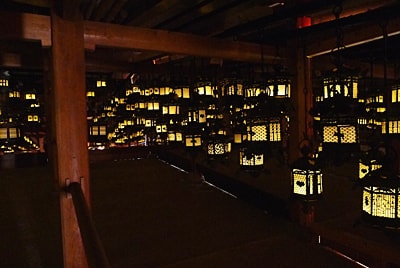
The hall stands at the east corner of the North Cloister, and was once used as an office for priests. The hall is now open to the public and houses many hanging lanterns which are lit, so that visitors can experience the mystic atmosphere created by their flickering light.
Nanmon (South Gate) *Important Cultural Property
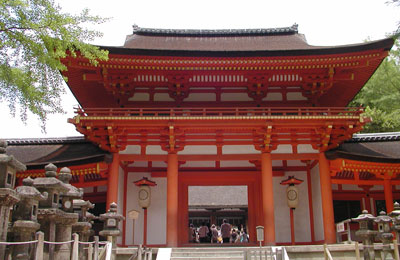
Nanmon is a two-storied gate standing at the front of Kasuga Taisha Shrine. Having walked along the approach, visitors enter the inner side of the cloisters through this gate. The 12m tall building is the shrine’s largest gate. During the Kasuga Festival(*), a representative is sent from the Imperial Court to the shrine. If the person is not from the Fujiwara family, which was one of Japan’s noble families, they must enter the shrine through this gate.
*Kasuga Festival is not open to the public.
Keiga Gate *Important Cultural Property
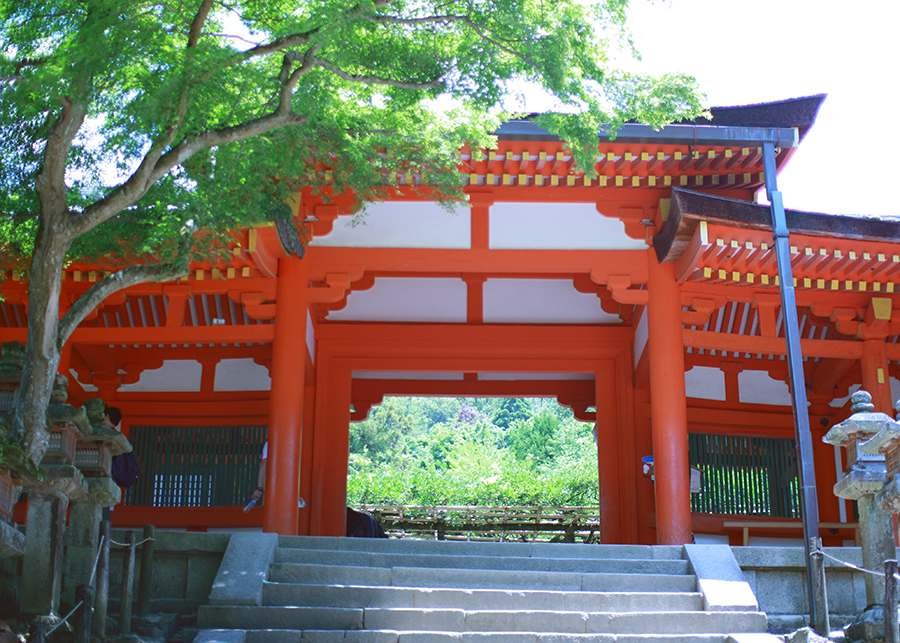
Among the three gates along the west cloister, Keiga Gate is the furthest south. This gate was once the official entrance to the shrine. Upon passing through it, one can see Mt. Mikasa, which had been considered a sacred mountain even before the Main Sanctuary was built. Unlike the two other gates along the west cloister, this gate has a coffered ceiling. Today, if an imperial representative is from the Fujiwara family, the person enters the shrine through this gate when they come to attend the Kasuga Festival.
Naishimon Gate *Important Cultural Property
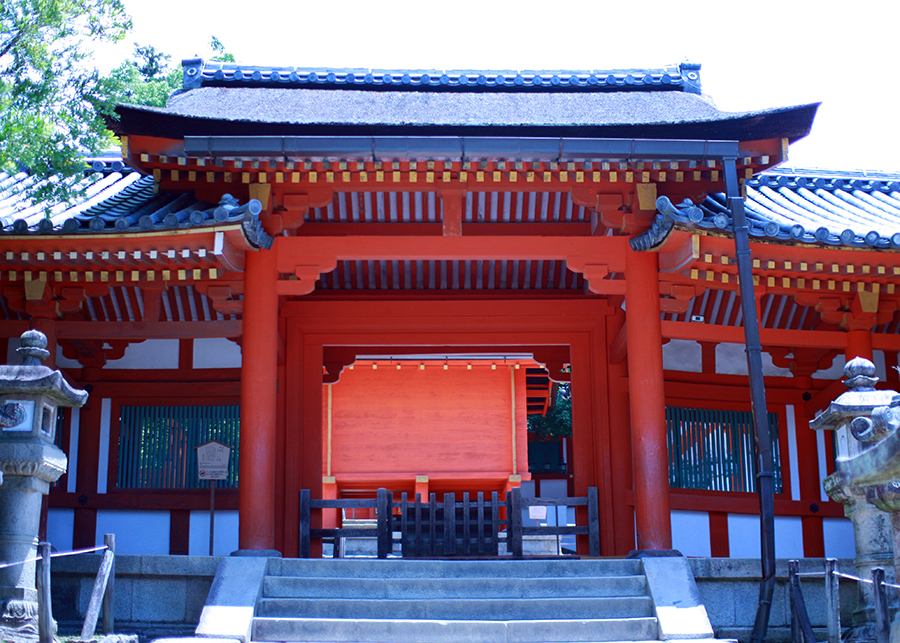
Naishiden was once a building for the “naishi” court ladies who served in the shrine. It is also called “Utsushidono”, because deities of the main shrine and Wakamiya Shrine are moved (“utsushi”) to this place at the time of “Zotai” (rebuilding) that takes place every 20 years. The building faces east, and the west part called Hisashi Room is used as the temporary dwelling place for the deity of Wakamiya Shrine.
Taga Jinja Shrine
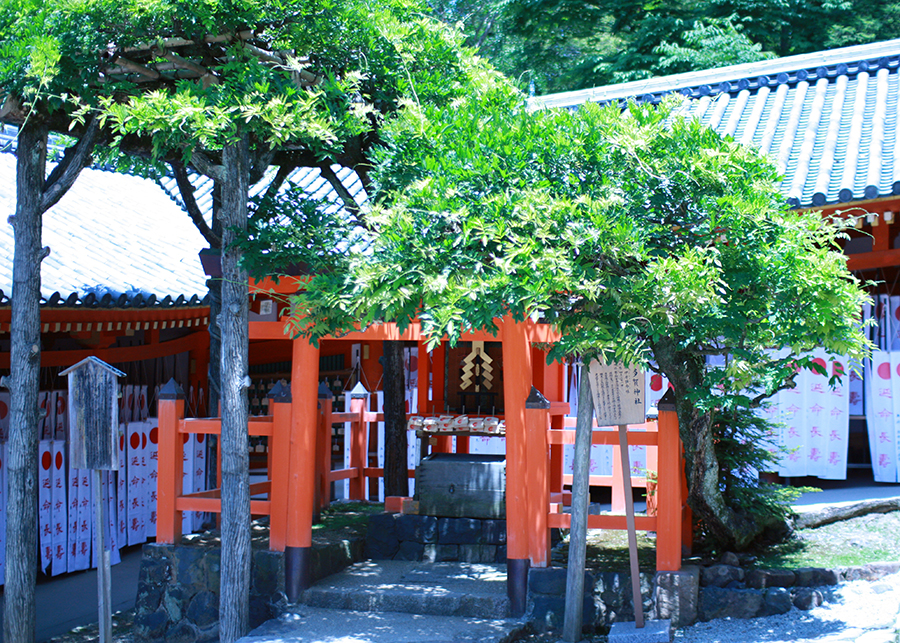
Deity
Izanagi-no-mikoto
Annual festival
April 22nd
Origin
The deity of Taga Jinja Shrine, in the northwest corner of the area surrounded by the cloisters, is worshiped as a god who gives people long lives. There is a story that Shunjobo Chogen was given extra years of life to reconstruct the Daibutsuden Hall of Todaiji Temple. Even today, many people wishing for long lives offer banners to the shrine.
Kazenomiya Jinja Shrine
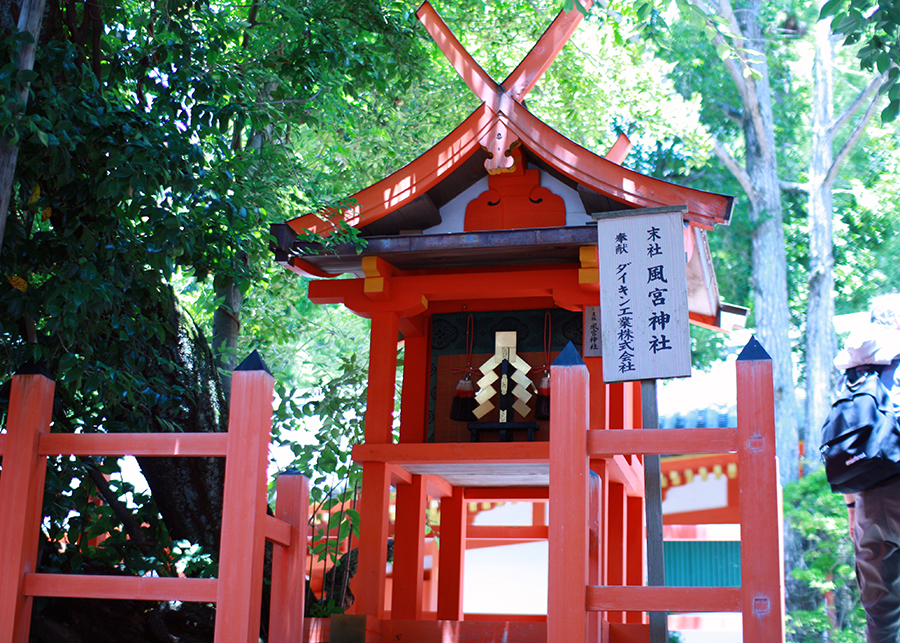
Deities
Shinatsuhiko-no-mikoto and Shinatsuhime-no-mikoto
Annual festival
September 1st
Origin
Located to the west of the Main Sanctuary, this shrine houses a deity that rules the wind (“kaze”). Traditionally, it is said that the wind deity in the west is able to protect the Main Sanctuary from the harm of the west wind, and from enemies.
Tsubakimoto Jinja Shrine
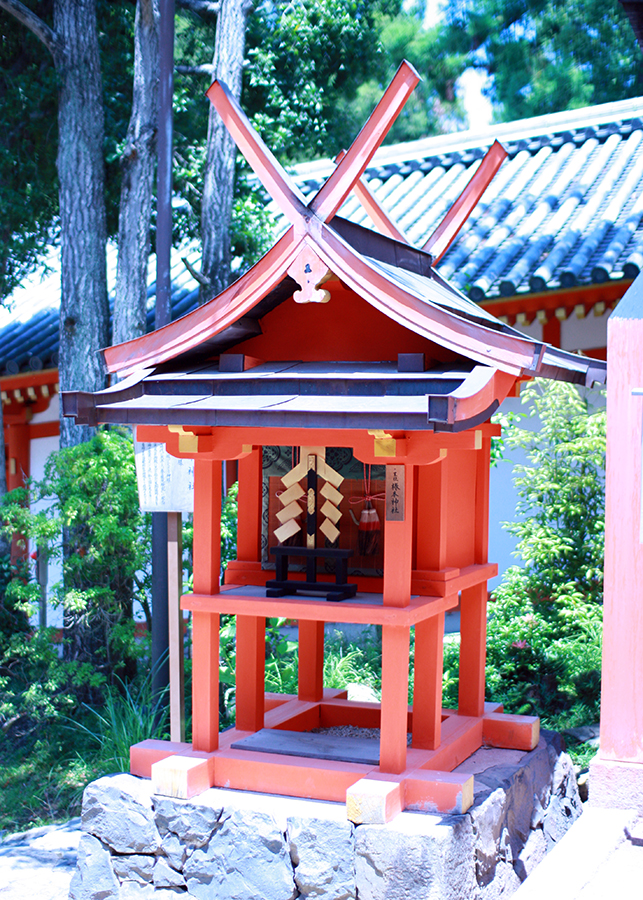
Deity
Tsunofuri-no-Kami
Annual festival
May 2nd
Origin
Standing at the northwest of the Main Sanctuary, this shrine represents the deity “Tsunofuri-no-Kami”, who is related to the main deities of Kasuga Taisha. The shrine is also known as “Hayabusa Myojin”, who is the deity who protects the world from disasters. It is said that the shrine was named “Tsubakimoto” because there was a “tsubaki” (camellia) tree nearby when it was first built.
Iwamoto Jinja Shrine
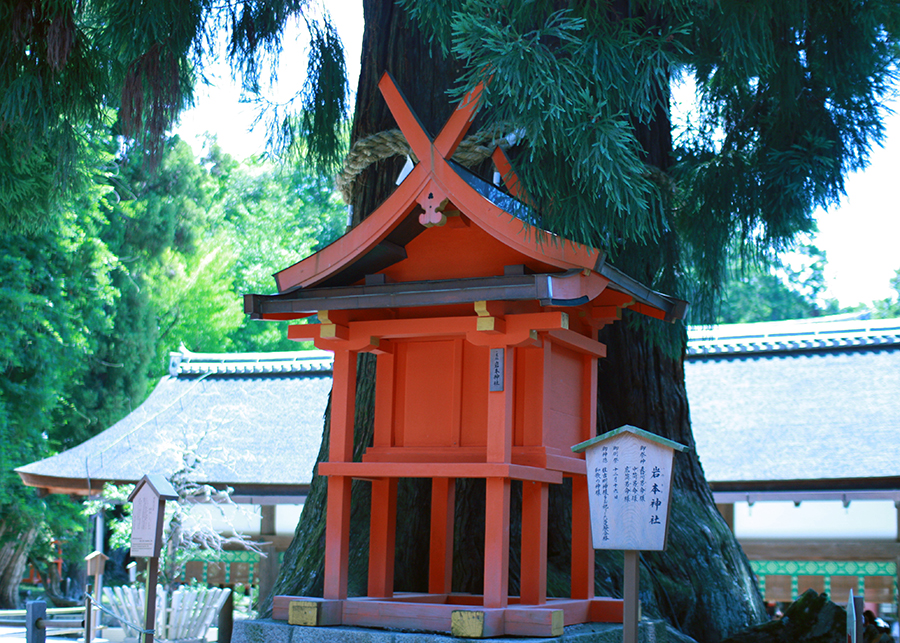
Enshrined deities
Uwazutsu-no-mikoto
Nakazutsu-no-mikoto
Sokozutsu-no-mikoto
(The three deities of Sumiyoshi)
Annual Festival
December 16th
Origin
This shrine, located at the root of a giant cedar tree (Shato-no-Ohsugi), was commonly called “Sumiyoshi-sha” in the medieval and modern ages. A diary of Kasuga Taisha from the early modern age mentions that a priest took a ritual position “on the platform of Sumiyoshi” for the Kasuga Festival on March 13th, and the place is now a stone pavement in front of Iwamoto Jinja Shrine.
On the other hand, another document owned by Kasuga Taisha records a different name for the shrine, “Iwamoto-sha”. Supposedly, the name “Iwamoto-sha” was first given in 1868 (the first year of Meiji Period) to distinguish it from another auxiliary shrine also called “Sumiyoshi-sha” at Nizaka-cho, Takabatake, Nara. Just like other Sumiyoshi shrines, this shrine’s main gods are worshipped as rulers of the sea and poetry.
Shato-no-Ohsugi (Giant cedar tree)
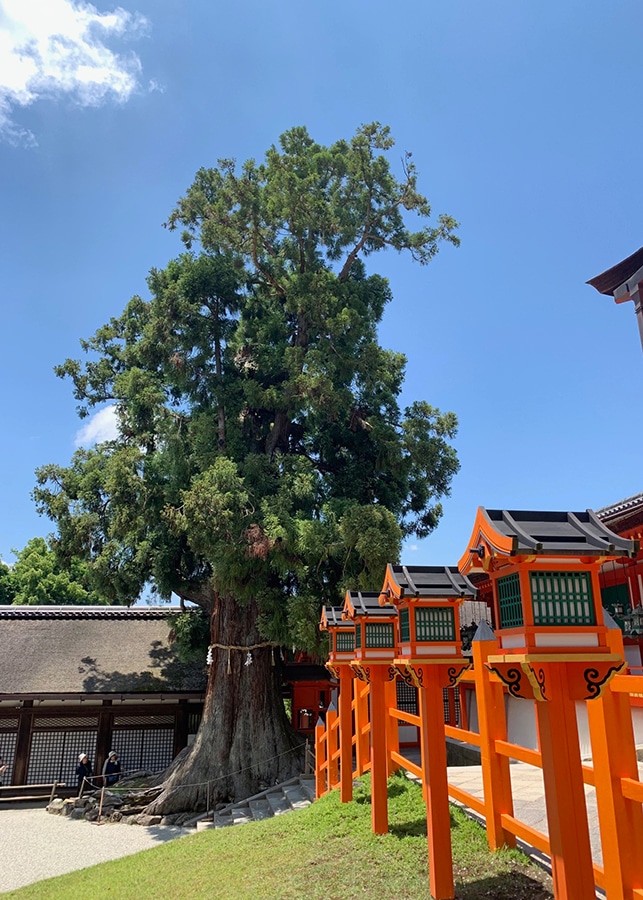
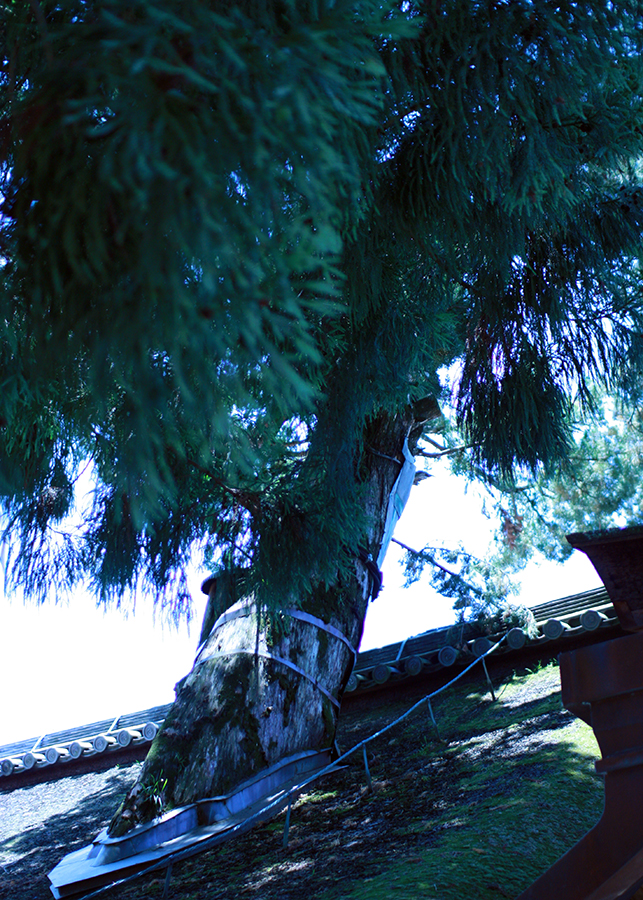
This 800-1000 year old tree is 8.7m in girth and 25m in height, and is depicted as a young sapling in the picture scroll “Kasuga Gongen-genki” from 700 years ago. Another tree grows from the root of the big tree, and is known as “Shinpak” (also called “Ibuki”). A hole has been built into the roof of Naoraiden Hall so as not to hinder the growth of the tree, following the divine decree of Kasuga Taisha to cherish plants.
“Sunazuri-no-Fuji” Drooping wisteria
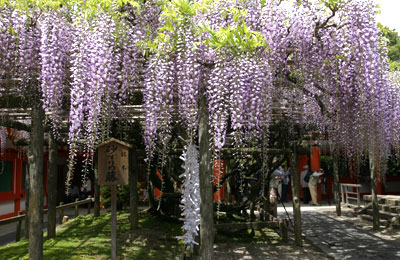
Entering through the Keiga Gate, there is a wisteria tree called “Sunazuri-no-Fuji” (wisteria flowers drooping down to reach the sand on the ground), as the flower clusters can be seen to hang down for more than 1 meter when in bloom by early May. The tree is probably a variant of Japanese wisteria, and is said to have been planted by the Konoe family, a prominent family of historical importance. It is over 700 years old, and was mentioned in “Kasuga Gongen-genki”, a picture scroll offered to Kasuga Taisha in 1309.
There is also a wisteria garden at the Man’yo Botanical Gardens in the shrine’s precinct, where about 200 wisteria trees of 20 different varieties grow and bloom beautifully in the spring.
Seven kinds of parasitic plants
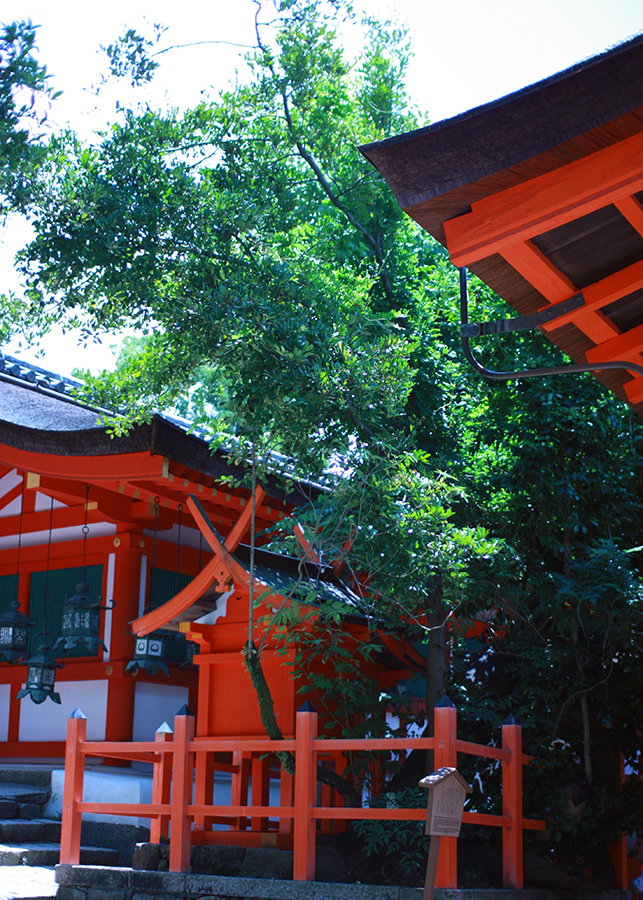
A rare tree grows inside the fence of Kazenomiya Jinja, east of the Treasure Hall and in the northwest corner of the area surrounded by the cloisters. Upon it grow seven kinds of plants: “isunoki” (Distylium racemosum), mountain cherry, camellia, nandina, elder, wisteria and maple. It is believed that the power of the wind deity gathered the seeds of those plants. Cherished as a sacred tree of childbirth, people write their wishes on a piece of thin paper and tie them around the branches.


ZONE




